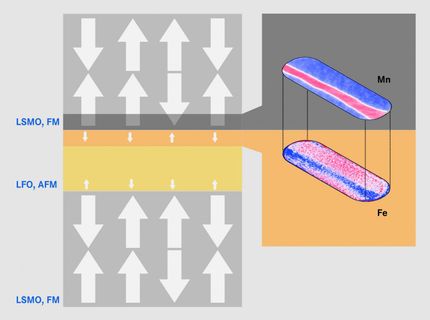Smart multi-layered magnetic material acts as an electric switch
Advertisement
The nanometric-size islands of magnetic metal sporadically spread between vacuum gaps display unique conductive properties under a magnetic field. In a recent study published in EPJ Plus, Anatoliy Chornous from Sumy State University in Ukraine and colleagues found that the vacuum gaps impede the direct magnetic alignment between the adjacent islands -- which depends on the external magnetic field -- while allowing electron tunneling between them. Such externally controlled conducting behaviour opens the door for applications in electronics with magnetic field sensors -- which are used to read data on hard disk drives -- biosensors and microelectromechanical systems (MEMS), as well as in spintronics with magnetic devices used to increase memory density.
At the quantum scale, materials characterised by thin-film structures composed of alternating magnetic and non-magnetic layers behave in a way that produces what is referred to as the Giant Magnetoresistance (GMR) effect. This discovery garnered Albert Fert and Peter Grünberg the 2007 Nobel Prize in Physics. In this study, the authors studied cobalt islands of between 5 nanometers (nm) and 25 nm, as well as iron islands of between 10 nm and 30 nm.
They found that the maximum values of the electric conductivity under an external magnetic field are obtained when the islands have a width of between 3 nm and 5 nm, with vacuum barriers of between 1 nm and 3 nm between them. However, they also observed that the tunnelling of electrons between the islands depends on the relative orientation of the direction of magnetisation in the adjacent islands and on the external magnetic field.
In addition, they determined that the electric conductivity is at a maximum when the magnetic moments in the adjacent granules are oriented in parallel, which leads to the tunnel magnetoresistance effect (TMR). The value of the tunneling magnetoresistance essentially depends on the interface properties of the insulator material between those islands.
Original publication
Other news from the department science
Most read news
More news from our other portals
See the theme worlds for related content
Topic world Sensor technology
Sensor technology has revolutionized the chemical industry by providing accurate, timely and reliable data across a wide range of processes. From monitoring critical parameters in production lines to early detection of potential malfunctions or hazards, sensors are the silent sentinels that ensure quality, efficiency and safety.

Topic world Sensor technology
Sensor technology has revolutionized the chemical industry by providing accurate, timely and reliable data across a wide range of processes. From monitoring critical parameters in production lines to early detection of potential malfunctions or hazards, sensors are the silent sentinels that ensure quality, efficiency and safety.
























































